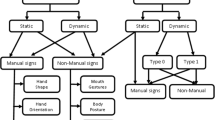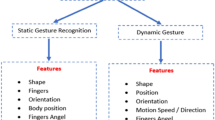Abstract
At present, mobile devices such as tablet-type PCs and smart phones have widely penetrated into our daily lives. Therefore, an authentication method that prevents shoulder surfing is needed. We are investigating a new user authentication method for mobile devices that uses surface electromyogram (s-EMG) signals, not screen touching. The s-EMG signals, which are detected over the skin surface, are generated by the electrical activity of muscle fibers during contraction. Muscle movement can be differentiated by analyzing the s-EMG. Taking advantage of the characteristics, we proposed a method that uses a list of gestures as a password in the previous study. In this paper, we introduced support vector machines (SVM) for improvement of the method of identifying gestures. A series of experiments was carried out to evaluate the performance of the SVM based method as a gesture classifier and we also discussed its security.








Similar content being viewed by others
References
Tamura H, Okumura D, Tanno K (2007) A study on motion recognition without FFT from surface-EMG (In Japanese). IEICE Part D J90–D(9):2652–2655
Yamaba H, Nagatomo S, Aburada K et al (2015) An authentication method for mobile devices that is independent of tap-operation on a touchscreen. J Robot Netw Artif Lifed 1:60–63
Yamaba, H, Kurogi, T, Kubota, S, et al (2016) An attempt to use a gesture control armband for a user authentication system using surface electromyograms. In: Proceedings of 19th international symposium on artificial life and robotics, pp 342–245
Yamaba H, Kurogi T, Kubota S et al (2017) Evaluation of feature values of surface electromyograms for user authentication on mobile devices. Artif Life Robot 22:108–112
Kita Y, Okazaki N, Nishimura H et al (2014) Implementation and evaluation of shoulder-surfing attack resistant users (in Japanese). IEICE Part D J97–D(12):1770–1784
Kita Y, Kamizato K, Park M et al (2014) A study of rhythm authentication and its accuracy using the self-organizing maps (in Japanese). Proc DICOMO 2014:1011–1018
Tamura H, Goto T, Okumura D et al (2009) A study on the s-EMG pattern recognition using neural network. IJICIC 5(12):4877–4884
http://www.myo.com. Accessed 30 Aug 2017
https://www.kickstarter.com/projects/belfio/deus-ex-aria-the-evolution-of-smartwatch-control. Accessed 30 Aug 2017
Acknowledgements
This work was partially supported by JSPS KAKENHI Grant number JP17K00186.
Author information
Authors and Affiliations
Corresponding author
Additional information
This work was presented in part at the 22nd International Symposium on Artificial Life and Robotics, Beppu, Oita, January 19–21, 2017.
About this article
Cite this article
Yamaba, H., Kurogi, T., Aburada, K. et al. On applying support vector machines to a user authentication method using surface electromyogram signals. Artif Life Robotics 23, 87–93 (2018). https://doi.org/10.1007/s10015-017-0404-z
Received:
Accepted:
Published:
Issue Date:
DOI: https://doi.org/10.1007/s10015-017-0404-z




